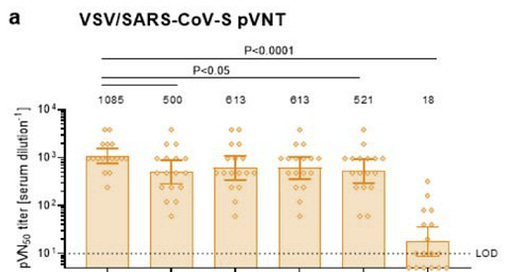The fall booster roll-out is well on its way. As of last Thursday, 4.35 million Americans have received their Pfizer/Moderna bivalent booster in the first three weeks of availability. (CDC numbers are updated every Thursday.) The new booster recommendation created an obvious uptick on the graph below of the daily number of COVID-19 vaccines administered.

There’s good and bad news about this number. Good news: This is higher than the initial booster uptake in the same time period last year. Potentially bad news: This is still really low uptake. In fact, it’s lower than what we see with the flu vaccine at this time. (For example, 13 million flu vaccines were administered by this time last year.) It’s only potentially bad news, though, because people may be waiting (and rightfully so) due to recent infections or boosters. Time will tell if we will get to optimal vaccine coverage for the winter. I still have hope.
Out of curiosity…
The FDA and CDC authorized the bivalent boosters based on a number of data sources. This was necessary to get ahead of the virus, like we do with the flu vaccine each year. Our hope is that a bivalent booster will help in three distinct ways:
Greater protection against infection and transmission, by boosting our first line of defense—neutralizing antibodies;
Longer protection against infection and severe disease, even just by a few months. (Unfortunately, we are at the mercy of time to know whether this will happen, but we are hopeful given data from our bivalent Beta vaccine clinical trials);
Broader protection or the ability to create antibodies that “see” more virus parts and “attach” more strongly compared to the antibodies we have right now.
We have two new studies with promising data.
The first preprint solidifies #1 and #3. Before now, we’ve relied on mice data to show that bivalent BA.4/5 vaccine increased neutralizing antibodies. But, now we have data on humans. Scientists measured antibodies in individuals who had three mRNA vaccines and a BA.4/5 breakthrough infection. (This can act as a proxy for the BA.4/5 booster.) They found antibodies were very high and were high against all Omicron subvariants studied. In other words, the bivalent booster will enhance protection against Omicron, which will help prevent infection and transmission. This is not surprising, but reassuring.
The second preprint points to #3. This is a study we’ve all been waiting for. Scientists studied B-cells—our antibody factories—and, particularly, whether we could make new B-cells (update the factory line after seeing another variant). This is important to study to ensure we don’t have original antigenic sin. (If you haven’t already, read this previous post on original antigenic sin where I attempt to explain this concept.) The current study showed that while we do have imprinting (which is normal and expected), we do make new B-cells after an updated Omicron vaccine. In fact, the authors stated, “immunization with an antigenically distant spike can overcome the antigenic imprinting by the primary vaccination series.” This means that an updated booster will increase the diversity of our antibodies and that memory will be retained by our immune systems.
Limitations
It’s important to note that, unfortunately, new subvariants of Omicron are already on the horizon with concerning mutations for antibody escape, like BA.2.75.2 or BQ.1.1. These new variants were not tested in the studies above. We’ve seen from another study that these new variants can substantially escape neutralizing antibodies from Coronavac (a Chinese vaccine using inactivated virus). But there are still a lot of unknowns: We don’t know how mRNA vaccines will hold up; we don’t know if these variants will take hold; and neutralizing antibodies are just one part of our complex immune system. Our safest bet is not through infection, but through vaccination. Our immune systems need updating and we need to be responsive to that, even if that updating is not perfect.
Bottom line
Emerging evidence on bivalent vaccines is encouraging. Even with new subvariants on the horizon, they will help in one way or another. Be sure to get your booster this fall!
Love, YLE
In case you missed it:
“Your Local Epidemiologist (YLE)” is written by Dr. Katelyn Jetelina, MPH PhD—an epidemiologist, biostatistician, wife, and mom of two little girls. During the day she works at a nonpartisan health policy think tank, and at night she writes this newsletter. Her main goal is to “translate” the ever-evolving public health science so that people will be well equipped to make evidence-based decisions. This newsletter is free thanks to the generous support of fellow YLE community members.






Messaging on the bivalent vaccines as reported from sources across the political spectrum was a fail. These new vaccines should not have been associated with phrases such as "not tested on humans" or "only tested on lab mice." Instead, they should have been associated with other truths such as "... having passed the same, thorough safeguards the annual flu vaccines have undergone for decades."
There's one option missing from the poll: "Waiting on availability". Where I am (NYC), they only do the bivalent booster by appointment, and the appointments are booked anywhere from a week to 3 weeks in advance depending on the location. The places I've gotten my last 3 shots (2 primary + 1 booster) either were closed or don't have the bivalent booster in stock (and say they won't until October). My appointment is just a few days away at this point, but if it were up to me I'd have gotten it a week or two ago.